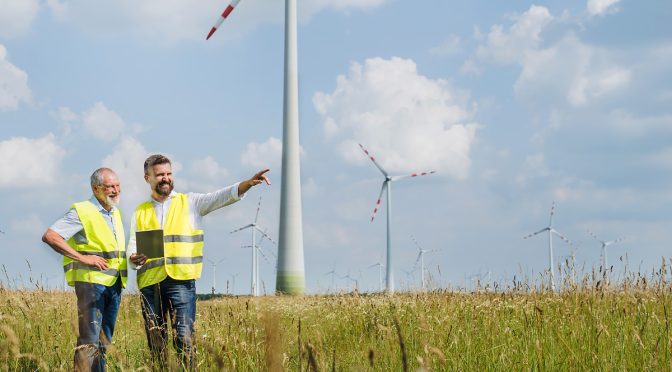Permitting bottlenecks remain one of the biggest barriers for the expansion of wind energy in Europe. 80 GW of wind energy projects are still stuck today in permitting procedures across Europe. But we are moving in the right direction: the European Institutions have agreed on a revised text of the EU Renewable Energy Directive (RED) which should help speed up permitting for new and repowered wind projects further.
Simplifying the process is now even more important as the new EU energy security strategy REPowerEU requires a doubling of annual wind energy installations by 2030. The revised RED contains many aspects that will speed up permitting and help achieve this goal. It gives renewables the status of overriding public interest which applies for instance when projects get challenged in court. Crucially, it reconfirms and clearly defines which permits need to be given out within the 2-year deadline. It also aims to speed up permitting within so called Renewables Acceleration Zones. But outside of them it will also be sped up. And for biodiversity developers now have to take the whole population of a species into consideration instead of individual animals.
On top of the RED, WindEurope, Eclareon, the Öko-Institut and SolarPower Europe have been accumulating good examples of renewables permitting simplification in the framework of the RES-Simplify project. The project mapped barriers to permitting for all renewable energy technologies, identified best practice from Member States and gathered solutions that Governments have already put on the ground to simplify the processes. The final report is now available here and can be used as a guidance on what Member States can do to speed up permitting.
Implementation of the EU rules is now key. Many Governments have started applying different aspects of the permitting acceleration measures in practice. Others need to follow asap including in their revised 2030 National Energy & Climate Plans. However, this does not only apply to the national level. Governments need to make sure regional and local practice reflects the new legislation too. That is where the bulk of the approvals take place.
Germany is a good example of a country that has taken action already. They want to start building 10 GW of new wind each year by 2025 which would not have been possible under their old permitting rules. But now they are applying the notion of overriding public interest for renewables alongside identifying renewables acceleration zones. This has already unlocked new wind energy projects that would have otherwise got stuck in court, potentially for years. New permits in the first quarter of the year were 61% higher than they were last year.
The RED also mandates EU Governments to digitalise their procedures within two years. But rules are not enough – Governments need the tools to digitalise. WindEurope has been working together with Amazon Web Services and Accenture to come up with a solution for permitting that can help public administration to streamline the application revision process. Together we developed the EasyPermits platform which is currently being tested with a Danish municipality. The platform will offer a single location for automated workflows, increased accuracy for applications and enhanced process transparency. It will also help to engage community members and allow them easy access to timely and relevant project information. This should all contribute to a more effective permitting process and ultimately more new wind farms to get built with community support and benefiting from the project.
WindEurope Director for Advocacy & Messaging Viktoriya Kerelska said: “The revised text of the EU Renewables Directive has some great new rules for permitting. It is really important these rules get applied by Member States asap. And crucially Ministries, municipalities and local permitting agents all need to be aligned on these new principles to speed up the build-out of wind. Some countries like Germany are already on the right path. For others the RES-Simplify report can be a good guidance as it outlines the best practice examples from other countries for the acceleration of permitting.”


